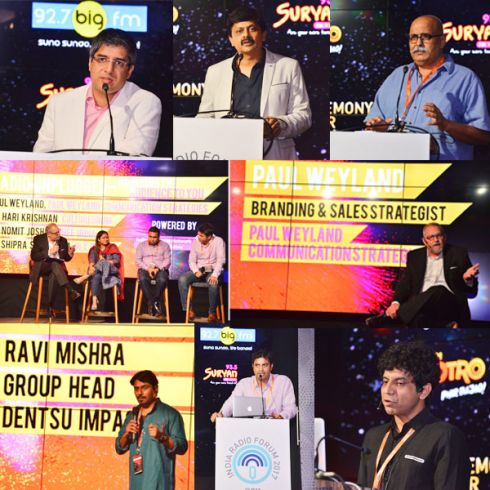
MUMBAI: The Indian radio industry has moved to Phase III and it has opened gates for more regional players. There is also a shift from 'reach medium' to 'advertising medium'. Thus, with radio growing with every step there is a need for self-evaluation and implementation of newer plans. To ensure that the steps are taken wisely, India Radio Forum (IRF) each year organises a session where the industry meets to discuss radio, its achievements and future objectives.
The 12th session of IRF held in New Delhi spoke about advertisers vision of radio and the areas of concern.
Every medium exists because of its loyal consumer base, emphasising on this very point Big FM CEO Tarun Katial began the 2017 session of IRF. He stated that the listeners are radio industries true assets and the radio business will grow only by investing in them. He further went on to explain the objective behind having India Radio Forum. He stated that IRF is a way of appreciating the industry for all the hard work. However, the task here is to celebrate the medium through people, who created this medium.
On the other hand Red FM and Surya FM’s COO B. Surendar shared some kind words for the forum. He stated that IRF is a forum to discuss problems and come up with solutions. He also narrated the journey of the Indian radio industry. “The best part is today, where people are accepting radio and helping it with a bright future,” stated he.
After the introductory session by Katial and Surendar, the forum opened to the first topic of the day - ‘Using Radio to Drive Social Change’. The session began with Rajkumar Jha who let the cat out of the bag. Without keeping the secrets of the business to himself he shared ways of luring the audience and effectively using radio to drive social change.
This session also spoke about Community Radio Stations. Hailing from a village in India, Jha knows the importance of a CRS. Thus, he spoke about the efficiency of a CRS. “It is a beneficial medium to communicate with the people of one’s community in its own language,” said Jha.
The session that followed was an eye opener in the sales and marketing world - ‘To Sell The Truth’. The speaker of this session was internationally acclaimed speaker, Paul Weyland who used his quirky wit with his marketing and sales experience to chalk out a success path for the radio industry. “The client is only looking up for new ideas. So pitch in the value for new ideas and they will not worry about their budget,” he stressed.
Hari Krishnan, Ravinder Siwach and Ravi Mishra were speakers for the session ‘Meet the Disruptors’. Introduced by Krishnan, Siwach explained a case study that worked for Red FM. The product was Nescafe coffee and according to the database, consumption of coffee is not even half as compared to tea in India. So to market such brand in a tea selling country was a challenge. Having radio into consideration, the team came up with amazing television ads.
“Challenges can be taken up as opportunities. Creating radio content is the biggest task because one has to create visualisation without visuals. The clients will keep saying ‘this is done, show me something new’ which results in rejection. Hence, the solution to this is to do something different, if you want to stand out of the crowd,” explained Mishra.
The last session was a panel discussion by Paul Weyland with panelist Shipra Srivastava, Nomit Joshi and Hari Krishnan, the most informative session amongst all. Here advertisers Srivastava and Joshi explained the change in thoughts - How radio was earlier just another medium to one of the most supportive medium.
The panelist put in plain words that advertising has always been more inclined towards television and digital. Thus, reaching the audience without visual was an experiment. Slowly and gradually, the companies started maturing and radio too put in the efforts to be there on the advertising front. Today, radio helps to reach a larger audience.
Joshi, a Gionee smart phone marketer explained that selfistan is a pure visual product. Fitting it under an audio medium was next to impossible. But gradually they understood that every selfie has a story, which is either read well or narrated well. Moving ahead with such strategy, Gionee succeeded to reach its audience via radio too.
The tip that most took back home was – “Content is all that matters. If the listeners are approached with a good content, it can never be neglected.”